About the Urban Land Institute
The mission of the Urban Land Institute is to provide leadership in the responsible use of land and in creating and sustaining thriving communities worldwide. ULI is committed to
 Bringing together leaders from across the fields of real estate and land use policy to exchange best practices and serve community needs;
Bringing together leaders from across the fields of real estate and land use policy to exchange best practices and serve community needs;
 Fostering collaboration within and beyond ULIs membership through mentoring, dialogue, and problem solving;
Fostering collaboration within and beyond ULIs membership through mentoring, dialogue, and problem solving;
 Exploring issues of urbanization, conservation, regeneration, land use, capital formation, and sustainable development;
Exploring issues of urbanization, conservation, regeneration, land use, capital formation, and sustainable development;
 Advancing land use policies and design practices that respect the uniqueness of both the built and natural environments;
Advancing land use policies and design practices that respect the uniqueness of both the built and natural environments;
 Sharing knowledge through education, applied research, publishing, and electronic media; and
Sharing knowledge through education, applied research, publishing, and electronic media; and
 Sustaining a diverse global network of local practice and advisory efforts that address current and future challenges.
Sustaining a diverse global network of local practice and advisory efforts that address current and future challenges.
Established in 1936, the Institute today has more than 34,000 members worldwide, representing the entire spectrum of the land use and development disciplines. Professionals represented include developers, builders, property owners, investors, architects, public officials, planners, real estate brokers, appraisers, attorneys, engineers, financiers, academics, students, and librarians.
ULI relies heavily on the experience of its members. It is through member involvement and information resources that ULI has been able to set standards of excellence in development practice. The Institute has long been recognized as one of the worlds most respected and widely quoted sources of objective information on urban planning, growth, and development.
About the ULI Center for Capital Markets and Real Estate
The ULI Center for Capital Markets and Real Estate focuses on real estate finance, real estate industry and investment trends, and the relationship between the capital markets and real estate. The mission of the Center is to promote understanding of the real estate capital markets and to provide leadership in fostering a healthy and productive real estate industry and capital markets sector that in turn promote thriving and sustainable communities worldwide. The Center pursues this mission through research, trend analysis, education, events, publications, web-based resources, and thought leadership.
2015 by the Urban Land Institute
1025 Thomas Jefferson Street, NW
Suite 500 West
Washington, DC 20007-5201
All rights reserved. Reproduction or use of the whole or any part of the contents without written permission of the copyright holder is prohibited.
Cover image: Detroit
Photo credit: Ryan Southern
Library of Congress Cataloging-in-Publication Data
Cisneros, Henry.
Urban real estate investment : a new era of opportunity / Henry Cisneros.
pages cm
Includes bibliographical references and index.
ISBN 978-0-87420-358-5 (alk. paper)
1. Real estate investmentUnited States. 2. Real propertyUnited States. 3. Land use, UrbanUnited States. 4. Real estate investmentUnited StatesCase studies. I. Urban Land Institute. II. Title.
HD257.C57 2015
332.63240973dc23
2015005407
About the Author
Henry Cisneros is chairman of Cisneros City Group, which invests in urban real estate and infrastructure projects. He is also chairman of CityView, a partner in building and renovating more than 11,000 residential units in 13 states over the last 15 years. Cisneros served four terms as mayor of San Antonio and was secretary of the U.S. Department of Housing and Urban Development in President Bill Clintons administration. He is currently vice chair of Habitat for Humanity International and chairman of the San Antonio Chamber of Commerce; and in 2007, he was inducted into the National Association of Home Builders Builder Hall of Fame. Cisneros holds masters degrees in urban planning and public administration from Texas A&M University and Harvard University, respectively, and a doctorate from George Washington University.

ULI Project Staff
Adrienne Schmitz
Senior Director, Publications
Project Director and Primary Editor
Nicholas Lalla
Analyst to the CEO and Chief Content Officer
Editor and Contributor
Kathleen B. Carey
Executive Vice President/Chief Content Officer
Dean Schwanke
Senior Vice President, Case Studies and Publications
Anita Kramer
Senior Vice President, ULI Center for Capital
Markets and Real Estate
Camille Galdes
Senior Research Associate
James A. Mulligan
Senior Editor
David James Rose
Managing Editor/Manuscript Editor
Betsy Van Buskirk
Creative Director/Graphic Designer
Craig Chapman
Senior Director, Publishing Operations
Contents
Foreword
A mericas cities are being reborn as new forces to transform the urban environment. Simply put, these are exciting times for metropolitan America. The mid-20th century images of decay that defined U.S. cities are fading away as urban cores throughout the nation are injected with new life.

Los Angeles is well known for its world-class universities, medical facilities, and entertainment companies. Anchor institutions such as the University of Southern California are critical to the new economy of the future.
NSERRANO/WIKIMEDIA COMMONS
A new dynamism has emerged through a convergence of new planning principles, renewed civic investment, and an influx of people not forced to move because of a shifting employment landscape, but rather who have made a deliberate choice to repopulate our urban cores.
Like any change, these forces of renewal come with challenges; we must seek to effect the positive outcomes of regeneration while arresting negative impacts on existing communities.
Henry Cisneros helped lay the foundation for this new life in Americas cities. As the young mayor of San Antonio, he helped lead his historic city to reach new heights through sound planning and powerful infrastructure investments. As secretary of the U.S. Department of Housing and Urban Development in the Clinton administration, he visited every state in his work to marshal the transformation of American public housing. Today, as a private sector real estate professional, Cisneros is tackling one of urban Americas most pressing issueshow to build for-sale housing for the middle class in our cities. In many ways, the loss of our cities middle class led to the urban decline of the late 20th century. Our cities must be focused on preventing a repeat of this history.
In this book, my friend captures this important time for our cities. As we come out of the worst recession of our lives, cities are playing a starring role in Americas recovery, but urban rebirth does not happen without smart guidance and foundational principles to guide it. From leading the way in new infrastructure investments to bravely tackling the effects of climate change, U.S. cities have reemerged as national centers of political, economic, and social innovation.
Next page
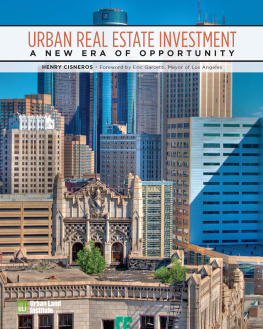
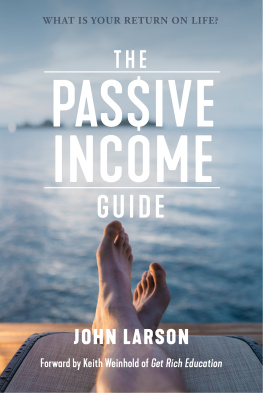
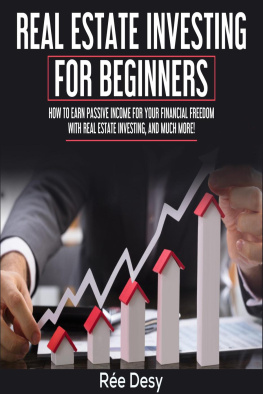


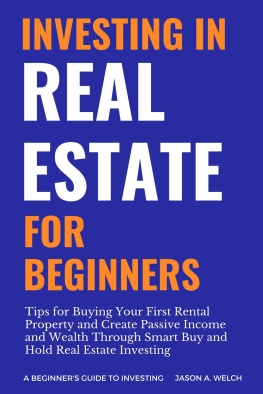
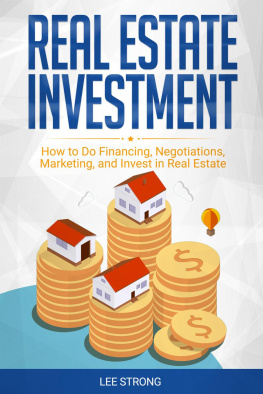


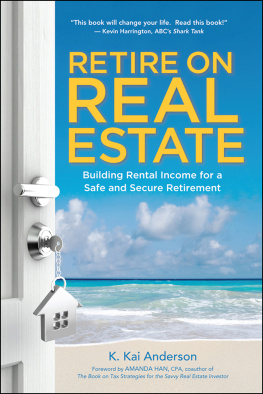
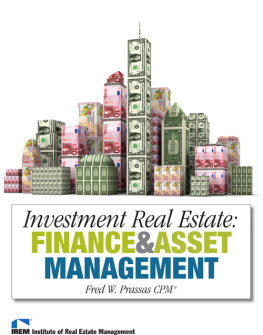
 Bringing together leaders from across the fields of real estate and land use policy to exchange best practices and serve community needs;
Bringing together leaders from across the fields of real estate and land use policy to exchange best practices and serve community needs;
